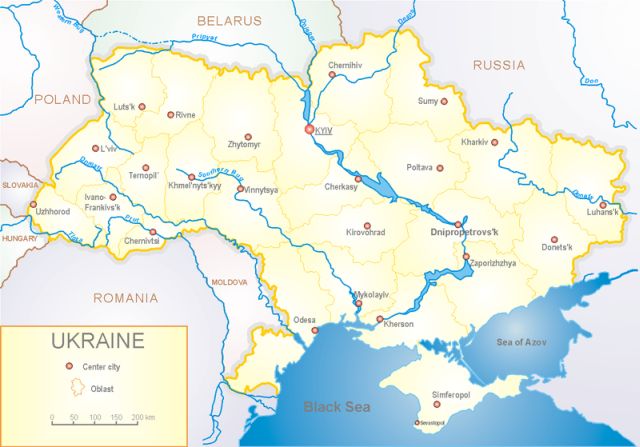(Max Fisher/Washington Post)
The United States added three more Nobel laureates to its roster on Monday, all in economics, bringing the national total to an astounding 347 in the prize’s history. That’s the most of any country in the world, by far: next-highest ranked is Britain with 120 laureates.
Up top is a heat map showing which countries have had the most Nobel laureates in the prize’s history. Most countries have zero Nobel laureates. The faint yellow countries have received exactly one Nobel in the 113 years since the first prize was given. There’s a small cluster of orange countries with maybe 10 to 15 Nobel laureates. A very tiny group of dark red countries have taken most of the Nobel prizes.
Just over 1,000 Nobels have been awarded since the prize was first established in 1901. Most of those have been in sciences but there’s also the literature prize and, most famously, the peace prize. We’ve added up every Nobel awarded since 1901 and separated them out by country. The results are fascinating – and revealing.
A stunning 83 percent of all Nobel laureates have come from Western countries (that means Western Europe, the United States, Canada, Australia or New Zealand). We’ll dive into some of the statistics of the Nobel below. But first here’s a map of the prizes broken down by region. You can see right away that Western Europe and North America take the vast majority of prizes:
Click to enlarge. (Max Fisher/Washington Post)
Looking at the data this way, it becomes awfully clear that people outside of Europe and North America don’t win very many Nobels. Africa has had only 16 Nobel laureates, ever. All of Asia, despite being by far the largest and most populous region in the world, can claim only 49 Nobel laureates.
To give you a better sense of the degree to which the Nobel really is a predominantly Western prize, here’s a pie chart showing the breakdown of the prize-winners by region and country. The blue slices are Anglophone countries (the United States, Canada, Australia and New Zealand); green stands for Western Europe; red stands for Eastern Europe.
Click to enlarge. (Max Fisher/Washington Post)
Look at all that blue and green! There’s just a tiny section of the chart left for non-Western countries, even though the vast majority of the world comes from those little non-Western slivers.
Of course, part of this has to do with the fact that the world has changed dramatically over the last 113 years. The West used to be much more dominant, so it got a big lead during the prize’s first decades. Colonization ended only halfway through the prize’s history; before then, Nobel prizes almost never went to non-Western countries. And while Eastern Europe got a big boost in laureates during the scientific races of the mid-Cold War, it has since languished. Still, the comparison is stunning.
Here’s a chart showing the Nobel laureates in non-Western regions over time:
This, to me, is the most interesting graphic on this page. I took out Western Europe and North America so that we could really look at how the number of Nobels is changing over time for every other region of the world. (A note on the data: the number of laureates in the 2010s is a projection; since we are four years into the decade, I multiplied the number of Nobel laureates so far by 2.5, to estimate what it could likely be at the end of the decade.)
You’ll notice a few trends right away in that chart. Eastern Europe had a big burst of Nobels during the 1960s, ’70s and ’80s, when the Soviet Union was a global scientific leader. It has since dropped back down and is currently tied with Africa for Nobel laureates this decade. That’s another trend: After decades of lagging in Nobels, Africa is very slowly picking up. But the big trend here is Asia, which has seen its rate of winning Nobels increase dramatically since the 1980s. Most of those prizes, at first, went to Japan. There’s now a small but rising number of Nobels going to other Asian countries, particularly India and China.
Here are a few more statistics about the history of the Nobel:
• Nobel prizes have been awarded to people from 72 different countries. But more than half all Nobel laureates come from only three countries: the United States, Britain and Germany.
• More than one in every three Nobel laureates is from the United States. Put another way, the United States has 4 percent of the world’s population and 34 percent of its Nobel laureates.
• All of Asia, Africa, Latin America and the Middle East combined have only 104 Nobel laureates. These regions hold 81 percent of the world’s population but only 10 percent of its Nobel laureates.
• 82 percent of Nobel laureates are from Western countries (Western Europe, North America, Australia or New Zealand). If you add in Eastern Europe, it’s 90 percent.
• Just over half of all Nobel laureates are from Europe: 54 percent. Of those, most are from Western Europe, which has had 45 percent of all laureates. You can see this in the giant swathe of green in the circle chart above.
• About half of the world’s Nobel laureates are from the Anglosphere: Britain, United States, Canada, Australia and New Zealand.
• The second most common native language among Nobel laureates is German; 152 laureates are from German-speaking countries.
• The region with the fewest Nobel laureates per capita is Africa. There is one African Nobel prize per 62 million Africans alive today. By comparison, there is one American Nobel prize per 900,000 Americans alive today.
• The Middle East has had 20 Nobel laureates: 12 Israelis, four Egyptians, one Palestinian, one Iranian, one Turk and one Yemeni. Ironically, it also has the largest proportion of peace prize winners: eight of the 20 Middle Eastern laureates are peace-prize winners.
• The top 10 countries with the most Nobel laureates, in order. Pay attention to how top-heavy this list is; the numbers drop precipitously:
1. United States (347 Nobel laureates)
2. Britain (120)
3. Germany (104)
4. France (65)
5. Sweden (30)
6. Russia (27)
7. Switzerland (26)
8. Canada (23)
9. Austria (22)
10. Italy (20)











